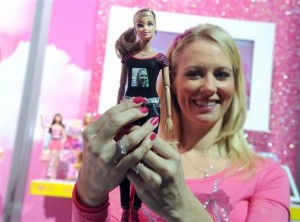SHINE ON LITTLE PONY!
uploaded to youtube by whitemagicofdoom on june 9, 2011
A Very Pony Place- Shine On Part 1, with the subtitle Come Back, Lily Lightly was a Program Length Commerical that aired in 1985. This episode takes place in Unicornia, which is a fantasyland where brightly colored unicorns live and play. The story begins with a group of unicorns stringing lights throughout the town in preparation for the “Rainbow Lights Party.” A neon pink pony named Lily is named the “Princess of Lightly.” Overjoyed with this title, Lily laughs, which causes her horn to light up. Embarrassed, she runs away.
As the story progresses, the rest of the unicorns sing a song about “getting the giggles” and they show how “work” can be fun. In the meantime, Lily meets a firefly who tells her that it is ok to be different. He convinces Lily that it is great fun to “shine” and that everything will turn out ok if she will only be herself. This story is very similar to Rudolph the red-nosed Reindeer, a beloved Christmas tale, which has been told to countless American children for generations.
In Spinning Out of Control, Gary Cross states that, “the toys derived from these stories were abstracted from the real world of family care and future roles.” (281) I disagree with his opinion. This Little Pony episode dealt with several “real world” issues. Friendship, acceptance, and laughter are all importance issues in the real world. “Be yourself and others will like you just the way you are,” and “laughter will enrich your life” are both values that benefit family care and future roles.
The setting and the animated ponies were fantasy, but this did not distract from the lessons present in the script. I feel the “make-believe” aspects of the show are what captivates the young audience and keeps their attention for 30 minutes. As a parent, I feel that this particular episode would teach my children some wisdom in an entertaining way.





